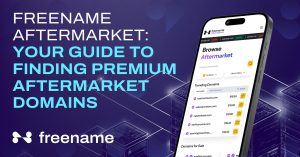In 1959, Richard Feynman discussed quantum mechanics in his famous lecture, “There’s Plenty of Room at the Bottom.” We know that there’s a lot to be unleashed in this universe and today’s supercomputers aren’t capable of it.
But what if their computational power is increased to more than 100,000 times the current processing speed? This is where quantum computing begins.
Imagine a computer that can solve a mathematical problem so hard that the most powerful super computers couldn’t perform in 10 septillion years. Well, Google just did that. They recently launched their new quantum computer capable of performing a mathematical calculation in under five minutes that today’s most powerful computers could not perform in 10 septillion years.
For sure, quantum computers can help unlock an entirely new level of computational power, transforming healthcare, logistics, aerospace, cybersecurity and almost every other field that exists.
But with this power comes challenges, making it vital for businesses and individuals to understand and prepare for the quantum shift.
So, is quantum computing worth considering for small businesses? Is it critical to embrace this technology? What are the risks if quantum computing hits the mainstream in coming years? We’re going to talk about it in this post.

Quantum Computing Basics
We all know how traditional computers work; they use bits (0 or 1) to perform calculations. This is where quantum computing is different.
Qubits
Quantum computers use qubits, instead of bits. Bits exist as 0 or 1, which means they can perform only one calculation at a time. On the other hand, qubits can exist as both simultaneously. Confusing, isn’t it?
Superposition
This mind-bending phenomenon of existing in two or more states simultaneously is known as superposition.
Quantum superposition allows quantum computers to perform multiple calculations, under multiple scenarios at once. They can process multiple possibilities at the same time. This, in turn, enhances their computational power.
Quantum Entanglement
Quantum systems boast another important feature called entanglement. In quantum entanglement, qubits become interconnected, meaning one’s state will directly influence another.
We can say, it’s like a quantum telepathy where distances won’t matter. Because of this entanglement, quantum systems can perform highly efficient and well-coordinated computations that no classical computer can match.
A Revolutionary Approach
Quantum computers can solve complex problems exponentially faster than traditional machines. For instance, a classical computer searching for a needle in a haystack sifts through each straw sequentially. A quantum computer, however, evaluates all possibilities simultaneously, finding the needle almost instantly.
This revolutionary approach opens doors to new possibilities, and have the potential to tackle previously impossible challenges, such as:
- Simulating molecular structures in drug discovery
- Optimizing vast logistical networks, etc.
Quantum technology is still evolving. It promises a leap not just in speed but in how we approach and solve problems. Experts believe, it could fundamentally transform industries and open doors to new discoveries, especially in space or the virtual world.
Breakthroughs in Quantum Computing: 1959 – 2024
As mentioned earlier, the idea was there since 1959. Let’s move through the timeline and see how this theory evolved and became practical in the span of seven decades.
| Years | Evolution of Quantum Computing |
| 1959 | Famous lecture “There’s Plenty of Room at the Bottom” by Richard Feyman discussed the concept of quantum mechanics. |
| 1973 | Alexander Holevo discovered the Holevo Theorem. It establishes limits for quantum data transmission |
| 1980 | The first theoretical model was proposed by Paul Benioff |
| 1981 | Richard Feynman suggests simulating quantum systems using quantum computers. |
| 1985 | David Deutsch develops the concept of a universal quantum computer capable of performing any computation. |
| 1994 | Peter Shor develops Shor’s algorithm, showing that quantum computers can efficiently factor large numbers, posing a threat to classical encryption systems. |
| 1996 | Lov Grover invents Grover’s algorithm, demonstrating quantum speedup for unsorted database searches. |
| 1998 | IBM and Stanford build the first 2-qubit quantum computer using nuclear magnetic resonance. |
| 2001 | IBM successfully runs Shor’s algorithm on a 7-qubit quantum computer. |
| 2007 | D-Wave announces the world’s first commercial quantum computer (16-qubit system). |
| 2011 | IBM creates a 5-qubit quantum processor using superconducting qubits. |
| 2017 | IBM introduces the first commercially available quantum computer via its cloud-based IBM Q Experience. |
| 2019 | Google achieves “quantum supremacy” with its 53-qubit Sycamore processor, completing a calculation in 200 seconds that would take classical supercomputers 10,000 years. |
| 2021 | IBM unveils the Eagle processor with 127 qubits. Chinese researchers develop a 113-photon quantum computer, showing photonic systems’ potential. |
| 2022 | Quantinuum demonstrates the use of quantum computers for error correction. Microsoft integrates Azure Quantum with practical use cases for businesses. |
| 2023 | Advances in quantum photonics improve scalability and reduce environmental sensitivity. Google refines quantum error correction protocols to address noise issues. |
Breakthroughs in 2024
Tech-giants have shown a positive intent towards improving efficiency, creating the right firmware, reducing errors and addressing potential challenges related to quantum computing.
In 2024, some of the big names collaborate, bringing together expertise and resources to tackle major challenges, such as error correction and qubit coherence.
For example:
- Microsoft and Quantinuum are driving scalable, practical quantum solutions, including the 12 logical cubits.
- Google strengthens quantum error correction protocols, making quantum systems more stable and reliable.
- Google launches its new quantum computer processor, Willow
- D-Wave continued advancing quantum annealing, which has specific applications in optimization problems.
- IBM shared on quantum platforms that it would focus on increasing qubit counts and reducing system noise.
- Photon-based qubits continue to advance, promising faster and cost-effective machines. These quantum systems are less sensitive to environmental disturbances.
These advancements collectively address critical barriers like noise, error rates, and scalability, bringing us closer to practical quantum computing for real-world applications.
The Future: Near-term Applications and Long Term Possibilities
Quantum computing can change various industries, such as logistics, healthcare, finance, marketing, and other fields. The following table shows how this technology can impact different industries:
| Healthcare | Quantum computers could revolutionize drug development by simulating complex molecules with precision. It may enable faster discovery of treatments for complex diseases. |
| Logistics | Quantum systems can solve complex optimization problems and streamline supply chain management, reducing costs, and improving efficiency in delivery routes and inventory control. |
| Marketing | With real-time analysis of vast consumer data, marketers can identify trends, optimize ad placements, and personalize campaigns faster than ever. |
| Finance | Quantum systems enable advanced risk analysis, fraud detection, and portfolio optimization, revolutionizing financial decision-making. |
| Cryptography | Quantum computing can break current encryption methods but also create stronger quantum-resistant algorithms. |
| Gaming | Developers can use quantum computing to accelerate the creation of game engines, delivering more immersive and realistic gaming experiences. |
| Law Enforcement | Quantum-powered analysis of complex security data can help solve crimes more efficiently, enhancing public safety and intelligence operations. |
In essence, quantum computing offers faster, smarter solutions to some of today’s toughest challenges.
What are the Challenges of Quantum Computers?
New technology always poses risks and threats to the traditional devices. Some of the major threats of implementing quantum computing include:
- Stability and Reliability Issues: Quantum systems are highly sensitive to their environment. Noise and error rates remain critical challenges, as qubits can lose their quantum state due to minor disturbances.
- Cybersecurity Threats: Shor’s algorithm, for instance, can factor large numbers quickly. It has the potential to make widely used encryption methods such as RSA and ECC ineffective. As a result, financial transactions, sensitive personal data, and national security are at risk.
- Collect Now, Break Later” Attacks: Hackers are already employing a strategy known as “Collect Now, Break Later,” This means they store encrypted data with the expectation that future quantum computers will decrypt it.
Above all, the high cost of quantum technology may create an economic divide.
- Early adoption will likely be dominated by tech giants and governments.
- Small businesses and organizations will be left behind
As a result the gap in technological capabilities and opportunities will widen.
What Should Small Businesses Do?
In the first, it seems like quantum computing is a distant concern for small businesses. Still, the risk is there to be addressed. They need to take precautionary measures now to survive. Why?
In general, small businesses have fewer resources to invest in advanced cyber security. This is the reason why they’re more vulnerable to cyberattack. With quantum computers developing their ability to break the existing encryption systems, businesses with vulnerable protocols will be easy targets for the hackers.
Quantum-safe Practices
Preparing early ensures businesses won’t be caught off guard when quantum technologies become mainstream. Proactively adopting quantum-safe practices can mitigate future risks.
Upgrade to Quantum-Resistant Cryptography
Begin transitioning to encryption methods designed to withstand quantum attacks, ensuring your data remains secure in the future. For example, instead of the traditional domains, you can think about switching to Freename domains that offer:
- Robust data security
- Fool-proof encryption
- Decentralized storage over vast networks across multiple chains
Buy Freename Domains to Maximize Data Security
Stay Informed
Keep up with quantum computing trends to understand emerging threats and solutions. Regularly educate your team on cybersecurity best practices. For example, Freename blog offers a plethora of information on data security, cyber threats, quantum computing, and more.
Collaborate with Experts
Partner with cybersecurity consultants who specialize in quantum readiness. These experts can assess vulnerabilities, recommend cost-effective solutions, and help future-proof your digital infrastructure.
Final Thoughts
Quantum computing is undoubtedly a ground-breaking innovation, solving complex problems in a jiffy and breaking current encryption with utmost ease. Experts believe it will reshape the future, giving us the power to develop life-saving drugs or provide logical solutions to customers without a hassle.
At the same time, quantum computers will also challenge today’s security protocols. Breaking existing encryption will be a piece of cake for quantum computers. This is exactly why businesses need to keep pace with the modern technology.
One way of dealing with the fast-pace advancement is to stick with pros and experts. For instance, if you’re a web3 enthusiast — a developer, domain minter, a gamer, or coin collector, etc., Freename can help you adapt new technologies and maximize data security.
So, decide now, before it’s too late!







